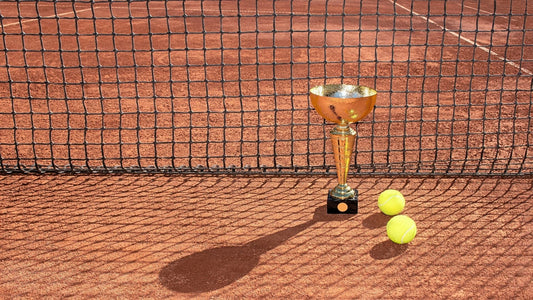The Imperfect Athlete: Asymmetry, Form Issues & Off the Couching it
From tendonitis, to torn muscles, to persistent back pain, we all know getting sidelined by an injury can be frustrating. We sat down with Bryan McCoy of Peninsula Fitness to get his take on common sports injuries, how to prevent them, and how to stay in the game. He believes that most injuries begin long before you start feeling pain, and his recovery philosophy takes it back to the basics.
Nature or Nurture: The Origin of Sports Injuries
“As I like to say, most of us don’t come off of the assembly line perfectly aligned,” says Bay Area physical trainer and manual therapist Bryan McCoy. “A lot of the postures that we have as an adult or a teenager have already started from the time we start learning to walk.”
“Look at children’s posture,” he suggests. “You’ll see a child who’s just learning to walk and they’ll have what I call different strategies.” When you observe a child running or playing sports, they each approach it a little differently, says McCoy.
It’s these movement idiosyncrasies that create your unique stride and posture. And, if they add more stress to the musculoskeletal system, he believes they can later equate to form issues in some athletes.
“The way our body is positioned changes how the forces run through our system,” says McCoy. “There are certain areas of the anatomy that are being exposed to more force based on that alignment.”

“The further you are from ‘ideal’ alignment, the odds are you’ll suffer more wear and tear,” he suggests. “So when you’re younger, your body is fresh, it’s new. You don’t usually experience a lot of pain and discomfort.” But as we age, he believes these little “deficits” and asymmetries can add up to painful symptoms. Just because you haven’t felt it yet, he warns, it doesn’t mean your injury has not begun.
Playing Through It: Understanding Types of Pain
McCoy believes “The most dangerous words are, ‘Maybe it will go away.' In his business, he sees clients who have escalated from “It only hurts when I play,” to symptoms that interfere with everyday life.
“We get the pain signals, but maybe we think "No pain no gain," says McCoy of the old high school gym teacher adage. “That’s a different type of pain. That’s muscular contraction effort, and you’re starting to feel the burn or the ache, and it stops when you stop.”

When it comes to injuries, however, he reminds athletes to ditch the machismo and check in with themselves regularly. “You see people who play tennis all the time and they’ve got a complete array of bands around their elbow and all kinds of things, and they’re just playing through it – not solving the issue.”
Maybe your pain lingered into the locker room at first, or a few hours after your workout. By the time it creeps into your daily routine - maybe playing with your kids, sitting at your desk, or sleeping uncomfortable – McCoy suggests the damage is already worse than you think. “Then you know you didn’t heed the warnings, which most people don’t.”
Basic Maintenance: Your Body as a Machine
McCoy believes that living pain free is all about prevention and maintenance, and taking care of form and flexibility issues can keep your body functioning at a high level. “The more miles you put on it, it’s going to be more compromised,” he says. “It’s kind of like driving your car and never tuning it up.”
“You don’t need to be perfect,” says McCoy. “You just need to be good enough that you can enjoy life and be pain free. It just takes a little commitment of your time.” When he takes on a new client, the first step is to assess the underlying factors that may be causing their pain. By carefully studying their stride, posture, range of motion, and symmetry issues, McCoy can spot areas of the body that might be experiencing undue strain.
“Identify and address your weak areas so you can keep doing these things with a lot of intensity,” he recommends. “It’s the same for tennis or whatever activity you want to pick. Certain tasks impose more force on certain aspects of the body.”
“If you’re a tennis player and you’ve had a lot of shoulder problems, we’ve got to do a lot of upper back strengthening and rotator cuff strengthening for you,” he says. “And if you’re a runner, it might be – let’s strengthen your ankles and feet.”

As part of his practice, McCoy also taps into the power of manual therapy – a type of bodywork that’s a little more “work” than spa treatment. His hands on techniques are rooted in anatomy, biomechanics, and kinesiology, and a little less cushy than your average massage. “There’s no gratification component in it,” he warns. “It could be uncomfortable”
“Not that that isn’t important either,” he says of a relaxing spa style massage. “The mental part – adding to wellness and quality of life is important too, so I never want to minimize that. Whatever label you want to use, I think everybody should be getting hands on therapy.”
Your Own Journey: Taking an Individual Approach
“The foundation to having good flexibility and mobility and strong muscles is having healthy quality tissue,” says McCoy. “You can stretch and you can lift weights, and whatever kind of strength training you like, but if the tissue is getting beat up and fibrous like stiff leather, it doesn’t respond as well.”
For McCoy, manual therapy is one component of his big picture approach.

Education is another. He believes that every client can benefit from a personalized assessment before creating a treatment plan. “You don’t want to pick a generic routine off the internet,” he says. Ideally, he suggests meeting with someone who can help identify problem areas and educate you about your options.
“The sooner we pick up on these, the sooner we can correct them,” he says. “Just like you wouldn’t take someone else’s financial plan and apply it to your life, you’re in a situation unique to you.”
Whether you have the luxury of meeting with a personal trainer, or if you’re trying to find the source of your injuries or issues on your own, McCoy reminds you to check in with yourself regularly. “If I’d have had this information earlier on, I might have less wear and tear,” is a common sentiment, he says. “It’s just people aren’t aware of it.”
“They’re saying, ‘This can’t really be a big deal because I didn’t have it yesterday, so that means it just showed up,’ ” he notes. “If we have a little education, we can avoid those things,” says McCoy. To him, it’s all about making the necessary changes when needed, regardless of when the injury began.
“Don’t leave it up to fate. Take control of the situation,” he says. “Be aware and be proactive.”




